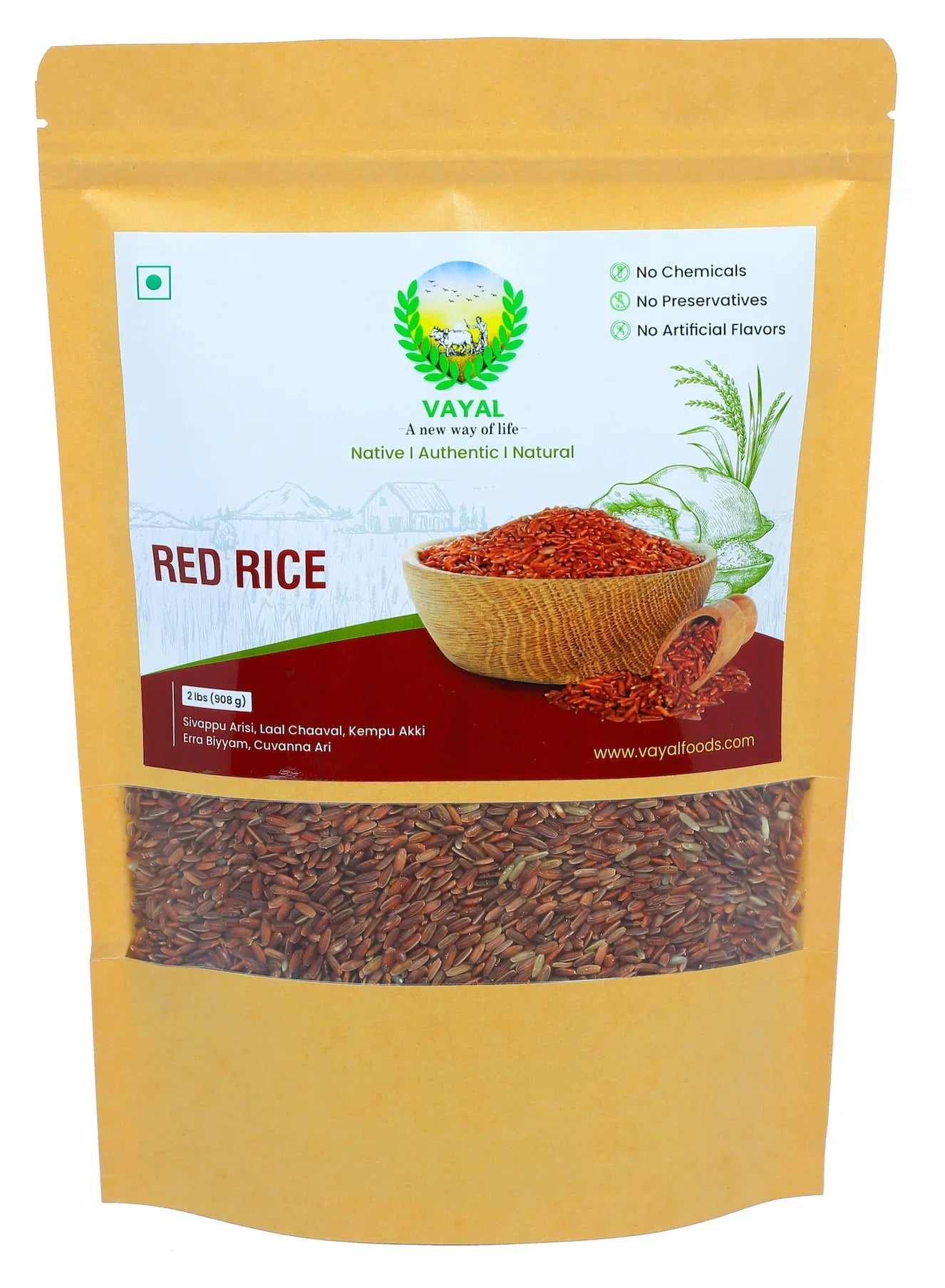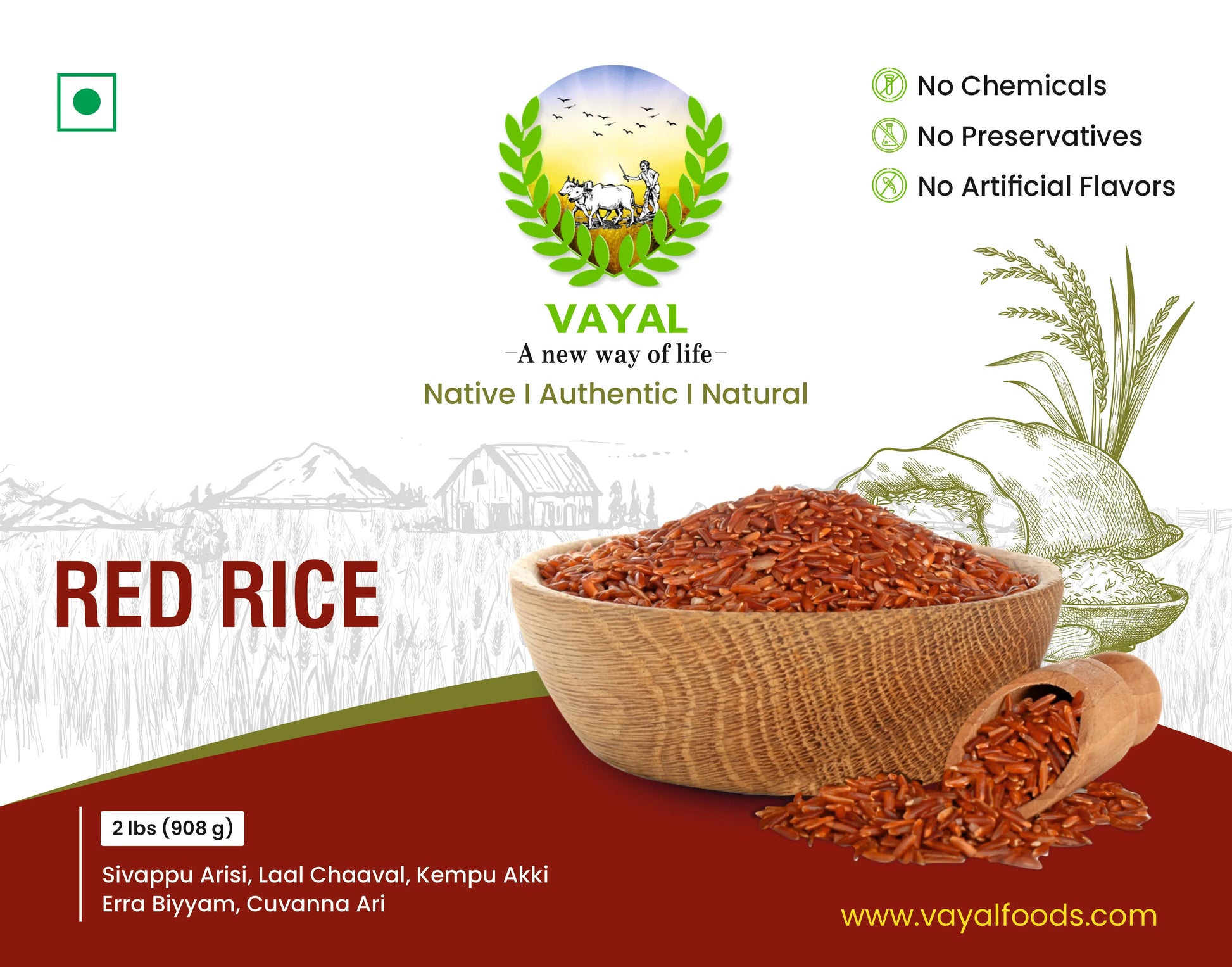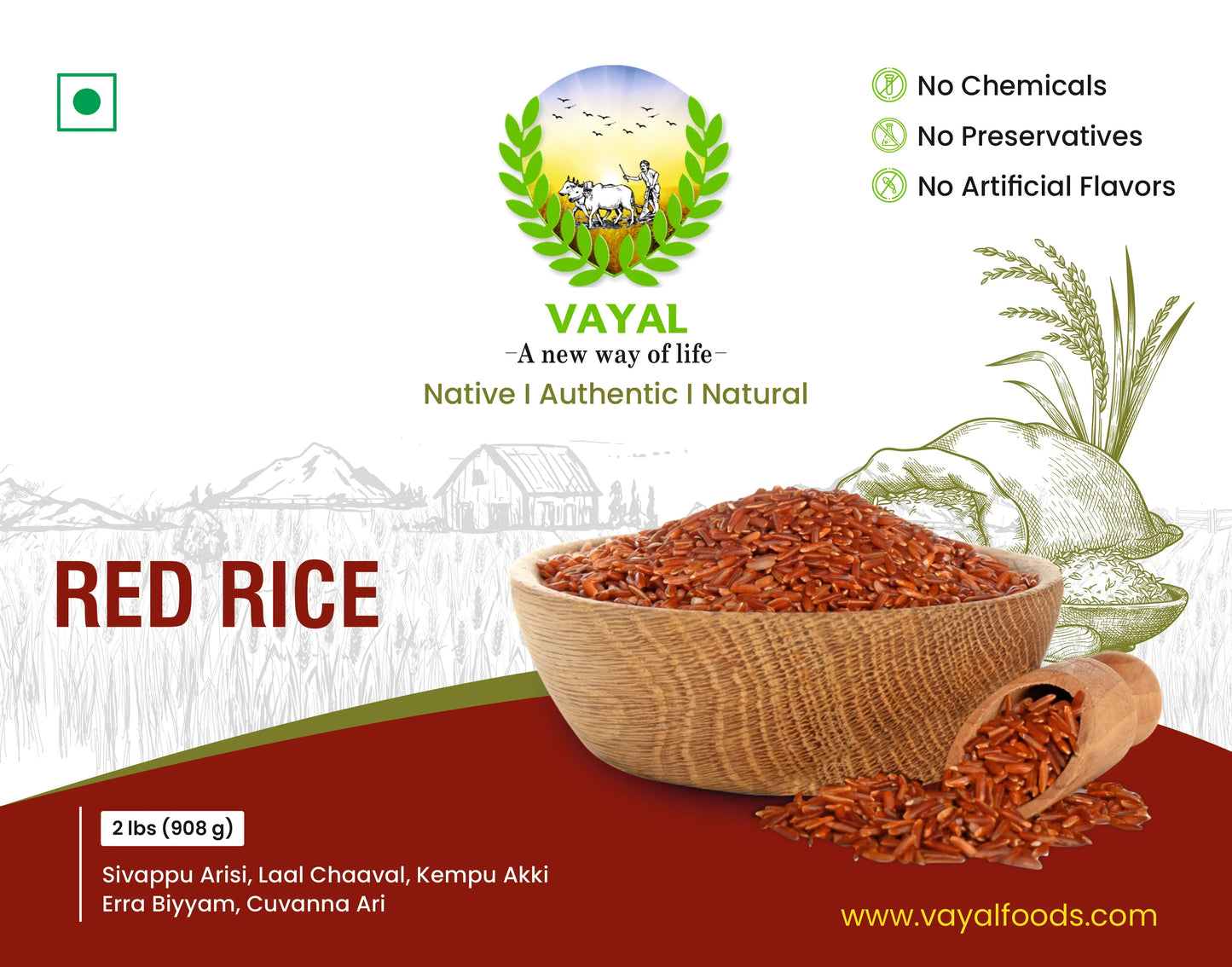
Red Rice also known as Sivappu Arisi, Laal Chaaval, Kempu Akki, Erra Biyyam, Cuvanna Arisi.
Red rice, with its vibrant hue, A grain of beauty, nutritious too. Cultivated in fields, under sun's glow, Its taste and texture, a delightful flow. Distinctive in flavor, a culinary gem, In salads, stir-fries, or in a steaming hem. With every bite, a story unfolds, Of cultures rich, and traditions bold.
Here are some of the health benefits associated with consuming red rice in Indian cooking:
-
-
Rich in Antioxidants: Red rice contains anthocyanins, the same antioxidants found in blueberries and other red or purple fruits and vegetables. These antioxidants help neutralize harmful free radicals in the body, reducing oxidative stress and inflammation, and lowering the risk of chronic diseases such as heart disease, cancer, and diabetes.
-
High in Fiber: Red rice is a good source of dietary fiber, both soluble and insoluble. Fiber aids in digestion by promoting bowel regularity, preventing constipation, and supporting a healthy gut microbiome. It also helps regulate blood sugar levels and may reduce the risk of colon cancer.
-
Low Glycemic Index: Red rice has a lower glycemic index compared to refined grains like white rice. This means it causes a slower, more gradual increase in blood sugar levels, which can help manage diabetes and improve blood sugar control.
-
Heart Health: Consuming red rice as part of a balanced diet may promote heart health. Its fiber content helps lower cholesterol levels, while its antioxidants contribute to overall cardiovascular health by reducing inflammation and protecting against heart disease.
-
Rich in Vitamins and Minerals: Red rice is a good source of vitamins and minerals such as iron, zinc, magnesium, and B vitamins. These nutrients play various roles in the body, including supporting immune function, promoting healthy skin, and aiding in energy metabolism.
-
Gluten-Free: Like many whole grains, red rice is naturally gluten-free, making it suitable for individuals with gluten intolerance or celiac disease. It can be enjoyed as a staple grain in gluten-free diets without causing any adverse reactions.
-
Cultural Significance: Red rice holds cultural significance in certain regions where it is grown and consumed. In addition to its health benefits, its cultivation and consumption may be associated with traditional practices, festivals, and ceremonies, contributing to the preservation of cultural heritage.
-
Overall, Vayal Foods' Red rice offers a nutritious and wholesome option for Indian cooking, providing a range of health benefits while also adding color, flavor, and texture to dishes.So let's savor this grain, with every meal, Red rice, a treasure, with wholesome appeal.




